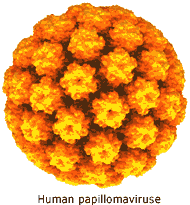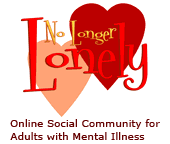Calendar
| «« | Feb 2008 | »» | ||||
| S | M | T | W | T | F | S |
|
1
|
2
|
|||||
| 3 |
4
|
5
|
6 |
7
|
8
|
9 |
| 10 |
11
|
12
|
13
|
14
|
15
|
16
|
| 17 |
18
|
19
|
20 | 21 | 22 | 23 |
| 24 | 25 | 26 | 27 | 28 | 29 | |
archives
- February 2008
- January 2008
- December 2007
- November 2007
- October 2007
- September 2007
- August 2007
- July 2007
- June 2007
- May 2007
- April 2007
- March 2007
- February 2007
- January 2007
- December 2006
- November 2006
- October 2006
- September 2006
- August 2006
- July 2006
- June 2006
- May 2006
- April 2006
- March 2006
- February 2006
- January 2006
- December 2005
- November 2005
- October 2005
- September 2005
- August 2005
- July 2005
- June 2005
- May 2005
- April 2005
- March 2005
- February 2005
- January 2005
Search Box
Ai in the media
KOCO-5, Oklahoma City:
Reuters:
Gender differences found in brain's serotonin system
Fox News:
Insomnia often untreated in patients with mental disorders
LinkBlog
[USA] Think Social Networks, Blogs Can’t Hurt You? Health insurers can use your on-line posts to avoid paying for treatment
Debunking the 'Chemical Imbalance' myth (pdf)
The Johns Hopkins Guide to Antidepressants (Note: requires registration of a valid email address)
Not Depressed, Just British!
Contact
Mailing List
RSS Feeds
Translation
Disclaimer
Anxiety Insights is not responsible or liable for any diagnosis made by a reader based on the content of this website.
Anxiety Insights is not liable for the contents of any external internet sites listed, nor does it endorse any commercial product or service mentioned or advised on any of the sites.
Always consult your doctor if you are in any way concerned about your health.
blog roll
- Agoraphobia
- Anxiety 2 Calm
-
Anxious Living : An Exploration
into Social Anxiety - Dare to Dream
- Dear Tobacco
-
Dr. Deborah Serani's:
Psychological Perspectives - Fast Weight Loss?
- Finding the Confidence
- GNIF Brain Blogger
- Legacy of War
- Mental Health Minutes
- My Brain: My Friend, My Enemy
- My Wife Has Agoraphobia!
- Neurophilosophy
- Out of the silence - site for young people with mental illness
- PTSD Combat
- The Last Psychiatrist
- The Trouble With Spikol
-
WebMD: Anxiety and
Stress Management - We Worry: A Blog for the Anxious
recommended links
Weekly audio-casts from theDepression Is Real Coalition
-
ABIL: Agoraphobics Building
Independant Lives -
Agoraphobia and Panic
Disorder Foundation -
Anxiety Disorders Association
of America - Anxiety Network Australia
- Anxiety-Panic.Com
- AnxietyZone
- Army Behavioral Health
- BrainPhysics - OCD
-
Canadian Network for Mood
and Anxiety Treatments - Children of Hoarders
- Choices in Mental Health (UK)
-
Dart Foundation: Gateway to PTSD
information -
David Baldwin's
Trauma Information Pages - e-couch free personal self-help guide
- EMDR Institute, Inc.
- EMDR Network Japan
- Fear of Flying course (free)
- Healthy Minds
- Information for People with Anxiety Disorders
- Internet Guide to REBT, CBT
- Living with a Brain Disorder
- Morita Therapy
- Mayo Clinic : Depression
- Mayo Clinic : GAD
- Mayo Clinic : OCD
- Mayo Clinic : Panic Attacks
- Mayo Clinic : PTSD
- Mayo Clinic : Social Anxiety
-
Medicines.org.uk - Anxiety &
Depression guides - Mind-Your-Mind Canada
- National Center for PTSD
-
National Institute of Mental
Health (NIMH) - No Such Thing As Crazy
- OCD Action, UK
- OCD Ireland
- Obsessive Compulsive Foundation
- Open Minds, Open Doors
- Out of the silence - site for young people with mental illness
- Paniccure.com
- Partners With PTSD
- Prescription Drug Information
- Psychiatric Service Dog Society
- PsychNews
-
Rational Emotive Behavior
Therapy (REBT) - Sane Australia
-
Shyness & Social Anxiety
Service of Australia -
Social Phobia/Social Anxiety
Association - Social Anxiety Support board
-
South African Depression &
Anxiety Group - Suicide Prevention Help
-
tAPir - the Anxiety Panic
internet resource -
The Panic Center (Free
CBT based programs) - The School of OCD
- UN-WHO Drug Trials Database
- U.S. Army Behavioral Health - PTSD
"just don't smoke"

Yul Brynner
- Menthol cigarettes harder to quit
- Secondhand smoke in cars serious threat to kid's health
- Starting smoking young increases addiction risk
-
Smoking doesn't slim girls;
stunts boys' growth - 40 reasons why you should quit smoking
- Pregnant smokers 'prime' their kids to smoke
- Smoking related coronary artery disease quickly reversed if young smokers quit
- Not ready to quit? Try cutting back
- Half smoking again within year of lung cancer surgery
- Cutting back 'compensation' increases toxin load per cigarette
- Tobacco companies upped nicotine level 11% since 1998
- Workplace passive smoke increases lung cancer risk
- Hooked by genes: The DNA sequences cigarette companies love
- Smoking causes long lasting changes to brain's bio chemistry
- Nicotine receptor stimulant trebles the odds of stopping smoking
- Bupropion, nortriptyline double chances of quitting
- Nicotine's powerful role in reinforcing smoking
- Pregnant smokers raise child's risk of stroke, heart attack
- Smoking linked to pancreatic cancer
- Neurobiology of Smokers' Cravings
- 'Low cancer risk' cigarettes as deadly as regular kind
- Quitting reduces lung cancer death risk by 70%
- Fetal nicotine exposure linked to teen attention problems
- Outdoor second-hand smoke exposure can harm
- Response to day's first cigarette predicts ease of quitting
- 'Healthy' children of smoking parents aren't really so healthy
- Children of smokers have up to five times higher levels of a nicotine toxin
- Smoking increases risk of dementia
- Smoking kills even after quitting
- Antenatal second hand smoke exposure increases child's psychological problems
- Smoking could kill 1 billion this century: WHO
- Just 1 cigarette can lead to nicotine addiction
- Smokers less likely to survive early stage lung cancer
- Smokeless tobacco delivers carcinogens more efficiently than cigarettes!
- Smoking permanently turns on genes that increase lung cancer susceptibility
- Secondhand smoke a health hazard for pets too
- Hypnosis for smoking cessation sees strong results
- Smoking doesn't burn fat
- Smoking linked to sagging breasts
- No evidence waterpipes decrease smoking harm
- Tobacco smoke + alcohol damage hearts more than either alone
anti torture campaign

- Torture experts write APA policy
- [APA] still rocked by torture debate
- Petition for psychologists
- AMA president says APA "did not accurately represent our ethical guidelines"
- Psychologists Aiding Torturers
-
Annual conference endorses
APA's torture policy :( - Physicians for Human Rights call on Congress to vote No on Military Commissions Bill
-
Torture is a Form of Trauma;
Trauma Causes PTSD - Psychoanalysts' association condemns torture use
- Humiliating, inhumane or degrading treatment IS torture
- Two American psychologists accused of war crimes. U.S. DoD investigating.
- DoD report proves psychologists central to POW/detainee abuse (pdf)
- 40 psychologists demand APA change policy on torture (pdf)
- Did the American Psychological Association turn a blind eye to torture for medicine precribing rights?
- Will psychologists still abet torture?
- Psychologist, Author Mary Pipher Returns APA Award Over Interrogation Policy
- Guantanamo Medical Role Likened to South Africa Under Apartheid
- The ethics of interrogation and the American Psychological Association
Deputy Army Chief of Staff for Intelligence, Lt. General John (Jeff) Kimmons, has stated that no actionable intelligence had been obtained through abusive interrogation methods in the last 5 years.
Human Relations Commission
monument, Monmouth County
New Jersey.
Hit Counter
since: 14 May 2006
Admin console
Hopelessness often lingers after depression lifts
A sense of hopefulness does not improve as quickly as other symptoms

People taking medication for depression typically see a lot of improvements in their symptoms during the first few months, but lagging behind other areas is a sense of hopefulness, according to new research from the University of Michigan Health System.
That means people with depression may still feel a sense of hopelessness even while their condition is improving, which could lead them to stop taking the medication.
For many in the study, feelings of hopefulness did not improve until several weeks, or even months, after depressive symptoms lifted, says lead author James E. Aikens, Ph.D., associate professor in the Department of Family Medicine at the University of Michigan Health System.
"The finding suggests that some patients may become unduly pessimistic and stop adhering to an already-helpful therapy," he notes. This finding is troubling, he says, because hopelessness is a strong risk factor for suicide.
Aikens and his team studied 573 patients with depression from 37 practices. They were given an antidepressant, either fluoxetine (Prozac), paroxetine (Paxil) or sertraline (Zoloft). They were assessed one, three, six and nine months after the treatment began.
Overall, patients' depression responded rapidly to medication, with 68 percent of their improvement occurring by the end of the first month, and 88 percent by three months. The patients experienced the majority of their improvement in several areas during this time period, including positive emotions, work functioning and social functioning.
Improvements in head, back and stomach pain plateaued during the first month, with little improvement thereafter. Because of that, Aikens says, physicians may want to consider additional treatments that directly target pain in depressed patients if these physical complaints persist after the first few weeks of treatment with antidepressants.
With hopefulness, however, the improvement was much more gradual. Physicians may want to consider cognitive-behavioral strategies, such as teaching patients to identify and challenge the pessimistic thoughts that usually accompany depression, and encouraging them to engage in activities that may improve their mood, Aikens says.
Expression of interest: The original study that tested antidepressants was conducted by Eli Lilly Inc. The secondary data analysis was conducted by the authors, not the sponsor. Some of t5he authors served as paid consultants to, or received honoraria from, Eli Lilly, Pfizer or Wyeth Pharmaceuticals.
Aikens JE, Kroenke K, Nease DE Jr, Klinkman MS, Sen A. Trajectories of improvement for six depression-related outcomes Gen Hosp Psychiatry. 2008 Jan-Feb;30(1):26-31. []
IL-6 plasma levels linked to major depression in older people
MedWire News: Increased plasma concentrations of interleukin (IL)-6 are associated with an increased prevalence of major depression in older people, say Dutch researchers who also found no association between depression and C-reactive protein (CRP) levels.
©Current Medicine Group Ltd
PTSD a warning sign for long-term medical problems
Research conducted by Geisinger Health System finds that veterans suffering from posttraumatic stress disorder (PTSD) are as likely to have long-term health problems as people with chronic disease risk factors such as an elevated white blood cell counts and biological signs and symptoms. However, few healthcare providers screen for PTSD in the same way as they screen for other chronic disease risk factors.
"Exposure to trauma has not only psychological effects, but can take a serious toll on a person's health status and biological functions as well," Geisinger Senior Investigator Joseph Boscarino, PhD, MPH says. "PTSD is a risk factor for disease that doctors should put on their radar screens."
For this study, Dr Boscarino examined the health status of 4,462 male Vietnam-era veterans 30 years after their military service. Results are being published in the current issue of the Journal of Nervous and Mental Disease.
The study finds that having PTSD was just as good an indicator of a person's long-term health status as having an elevated white blood cell count. An elevated white blood cell count can indicate a major infection or a serious blood disorder such as leukemia.
The study also found that veterans with high erythrocyte sedimentation rate (ESR), which indicates inflammation, were also at risk. There was a similar finding for a possible indicator of serious neuroendocrine problems.
While these disease markers are measured with a blood test, PTSD is commonly measured with a psychological test or a mental health examination.
This research comes as Geisinger is organizing a national conference on May 13 to address PTSD in combat veterans from rural parts of the country.
Boscarino says that almost anyone who experiences a traumatic event can experience PTSD, meaning accident and disaster victims are also predisposed to the biological risk factors associated with PTSD.
Although therapy doesn't necessarily have to be extensive, Boscarino says it should occur shortly after a person has experienced a traumatic event. Early treatment may be critical to avoiding depression, PTSD and substance abuse-related problems following trauma.
"As the conflicts in the Middle East continue, we're seeing a new wave of our service members who have posttraumatic stress," says Boscarino, a Vietnam veteran. "If we don't get these personnel help earlier, our research shows that they may experience more serious health problems down the road."
Boscarino JA. Psychobiologic Predictors of Disease Mortality After Psychological Trauma: Implications for Research and Clinical Surveillance. J Nerv Ment Dis. 2008 Feb;196(2):100-107 [Abstract]
Psychological stress may increase cervical cancer risk

A woman's daily stress can reduce her ability to fight off a common sexually transmitted disease and increase her risk of developing the cancer it can cause, according to a new study. No such association is seen, however, between past major life events, such as divorce or job loss, and the body's response to the infection.
Human papillomavirus (HPV) is spread during sexual intercourse. The most common subtype of the virus is HPV16. Infection with HPV16 and other HPV subtypes can cause cervical cancer.
"HPV infection alone is not sufficient to cause cervical cancer," explained Fox Chase Cancer Center's Carolyn Y. Fang, Ph.D. "Most HPV infections in healthy women will disappear spontaneously over time. Only a small percentage will progress to become precancerous cervical lesions or cancer. An effective immune response against HPV can lead to viral clearance and resolution of HPV infection. But some women are less able to mount an effective immune response to HPV."
Fang and her colleagues hypothesized that stress could lead to alterations in immune functioning that make the body less able to effectively clear the virus. Their study exploring this hypothesis appears in the February issue of Annals of Behavioral Medicine (volume 17, number 1).
In the study, researchers examined potential associations between psychological stress and immune response to HPV among women who had precancerous cervical lesions. The women were asked to complete a questionnaire about their perceived stress in the past month and about major stressful life events that had occurred, such as divorce, death of a close family member or loss of a job.
"We were surprised to discover no significant association between the occurrence of major stressful life events and immune response to HPV16. This could be due to the amount of time that has passed since the event occurred and how individuals assess and cope with the event," said Fang. "Our findings about subjective daily stress told a different story, however. Women with higher levels of perceived stress were more likely to have an impaired immune response to HPV16. That means women who report feeling more stressed could be at greater risk of developing cervical cancer because their immune system can't fight off one of the most common viruses that causes it."
Fang CY, Miller SM, Bovbjerg DH, et al. Perceived Stress is Associated with Impaired T-Cell Response to HPV16 in Women with Cervical Dysplasia Ann Behav Med. 2008 Feb;doi:10.1007/s12-6 [Abstract | Full text]
Dramatic fall in suicide rates among British teens and young adults
The reasons for the steady decline in suicides among young people in the UK are explored in two studies by researchers from the University of Bristol published on bmj.com.
The studies were carried out in collaboration with the Office for National Statistics and IMS Health.
The first shows that fewer young men in England and Wales are dying by suicide than at any time in the last 30 years. Contributory factors probably include less unemployment, the impact of the suicide prevention policy initiatives in England and Wales and the availability of safer antidepressants.
The researchers carried out a time trend analysis among men and women aged 15-24 and 25-34 between 1968 and 2005 using data on suicide mortality, population statistics and surveys, prescribing information and data on unemployment and divorce.
They found that for 15-24 year-old men, the overall suicide rate dropped from 16.6 per 100,000 in 1990 to 8.5 per 100,000 in 2005. Amongst 25-34 year old men, overall suicide rates declined from 22.2 per 100,000 in 1990 to 15.7 per 100,000 in 2005.
For women, suicide rates in the 21st century are at their lowest levels since 1968.
Professor David Gunnell, co-author of the papers, said: "Favorable changes in several different factors - levels of employment, substance misuse and antidepressant prescribing as well as policy focus on suicide and vehicle exhaust gas legislation - may have contributed to the recent reductions."
The second study finds no effect on suicide of the recent restrictions on antidepressant prescribing to children and adolescents in the UK.
They analysed three separate sets of data between 1993 and 2006 (SSRI antidepressant prescriptions to 12-19 year olds in the UK, annual deaths from suicide in 12-17 year olds in England and Wales, and hospital admissions for self-harm in 12-17 year olds in England).
But they found no evidence of a temporal association between trends in antidepressant prescribing and deaths from suicide or hospital admissions for self harm despite a halving in levels of prescribing following regulatory action in 2003.
The authors say: "These findings are important because they suggest that reduced access to antidepressants in young people appears not to have had an adverse impact on suicide deaths."
An accompanying editorial suggests that sustained use of antidepressants is probably too rare to have much overall effect on risk of suicide in people living with depression.
Biddle L, Brock A, Brookes ST, Gunnell D. Suicide rates in young men in England and Wales in the 21st century: time trend study. BMJ, 2008 Feb;doi:10.1136/bmj.39475.603935.25[Full text]
Wheeler BW, Gunnell D, Metcalfe C, Stephens P, Martin RM. The population impact on incidence of suicide and non-fatal self harm of regulatory action against the use of selective serotonin reuptake inhibitors in under 18s in the United Kingdom: ecological study. BMJ, 2008 Feb; doi:10.1136/bmj.39462.375613.BE[Full text]
Simon G. Editorial: Antidepressants and suicide. BMJ, 2008 Feb;doi:10.1136/bmj.39482.666366.80 [Full text ()]
TMS still is not recommended for resistant depression
KATE JOHNSON
MONTREAL - Only one-quarter of patients with treatment-resistant depression respond adequately to repetitive transcranial magnetic stimulation, according to a systematic review of 20 randomized controlled trials.
"Even though it is available in many centers, the overall impression is that repetitive transcranial magnetic stimulation [rTMS] is not recommended for clinical use," said Dr Raymond W. Lam, professor and head of the division of clinical neuroscience in the department of psychiatry at the University of British Columbia, Vancouver.
© 2008 Elsevier Inc. All rights reserved.
Abstract: Agoraphobia and Panic
Psychother Psychosom 2008;77:147-157
Agoraphobia and Panic
Wittchen HU, Nocon A, Beesdo K, Pine DS, Höfler M, Lieb R, Gloster AT.
Institute of Clinical Psychology and Psychotherapy, Technische Universität Dresden, Dresden; Max Planck Institute of Psychiatry, Research Group of Molecular Psychology, Munich, Germany; Mood and Anxiety Disorders Program, National Institute of Mental Health, Division of Intramural Research Programs, Bethesda Md., USA; Institute of Psychology, Epidemiology and Health Psychology, University of Basel, Basel, Switzerland
Background: The relationship of panic attacks (PA), panic disorder (PD) and agoraphobia (AG) is controversial. The aim of the current study is to prospectively examine the 10-year natural course of PA, PD and AG in the first three decades of life, their stability and their reciprocal transitions.
Methods: DSM-IV syndromes were assessed via Composite International Diagnostic Interview - Munich version in a 10-year prospective-longitudinal community study of 3,021 subjects aged 14-24 years at baseline.
Results: (1) Incidence patterns for PA (9.4%), PD (with and without AG: 3.4%) and AG (5.3%) revealed differences in age of onset, incidence risk and gender differentiation.
(2) Temporally primary PA and PD revealed only a moderately increased risk for subsequent onset of AG, and primary AG had an even lower risk for subsequent PA and PD.
(3) In strictly prospective analyses, all baseline groups (PA, PD, AG) had low remission rates (0-23%). Baseline PD with AG or AG with PA were more likely to have follow-up AG, PA and other anxiety disorders and more frequent complications (impairment, disability, help-seeking, comorbidity) as compared to PD without AG and AG without PA.
Conclusions: Differences in incidence patterns, syndrome progression and outcome, and syndrome stability over time indicate that AG exists as a clinically significant phobic condition independent of PD. The majority of agoraphobic subjects in this community sample never experienced PA, calling into question the current pathogenic assumptions underlying the classification of AG as merely a consequence of panic. The findings point to the necessity of rethinking diagnostic concepts and DSM diagnostic hierarchies.
(Text has been reformatted for clarity; ed.)
Copyright © 2008 S. Karger AG, Basel














